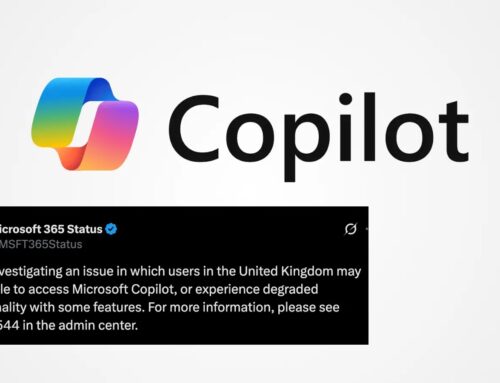
WhatsApp Vulnerability Exposes 3.5 Billion Users’ Phone Numbers
WhatsApp Vulnerability Exposes 3.5 Billion Phone Numbers: A Deep Dive into a Critical Flaw
A recent revelation has sent ripples of concern across the cybersecurity landscape, exposing a fundamental flaw in WhatsApp’s architecture that reportedly compromised the phone numbers of an astonishing 3.5 billion users globally. This incident, brought to light by security researchers, underscores the persistent challenges in securing vast user bases and raises critical questions about data privacy on one of the world’s most ubiquitous messaging platforms. For IT professionals, security analysts, and developers, understanding the intricacies of this vulnerability is paramount for developing more resilient systems and safeguarding user data.
The reported vulnerability, despite warnings dating back to 2017, highlights a concerning gap between awareness and remediation. This article will dissect the nature of the flaw, explore its implications, and provide actionable remediation steps to mitigate similar future risks.
The Contact Discovery Flaw: How it Unfolded
The core of this significant data exposure lies within WhatsApp’s contact discovery feature. This functionality, designed to help users quickly connect with their contacts already on the platform, inadvertently created an avenue for malicious actors to harvest phone numbers on an unprecedented scale. While specific technical details of the exploitation method are still emerging, the underlying principle often involves repeatedly querying the public API endpoints associated with this feature using automated scripts. These scripts, by systematically inputting various phone numbers, could then ascertain which numbers were registered WhatsApp accounts.
The sheer volume of exposed data – 3.5 billion phone numbers – indicates a severe lack of robust rate-limiting and access controls on these discovery endpoints. Even without exposing message content or other personal identifiable information (PII), the leakage of phone numbers alone is a significant privacy breach, as these numbers are often linked to other online services and can be used for targeted phishing, spam campaigns, and even SIM-swapping attacks.
Implications of Such a Massive Data Exposure
The exposure of 3.5 billion phone numbers has far-reaching consequences:
- Increased Phishing and Spam: Threat actors can leverage these lists to launch highly targeted phishing campaigns, attempting to trick users into divulging credentials or installing malware.
- SIM-Swapping Risk: Phone numbers are crucial for multi-factor authentication (MFA) and account recovery. With these numbers, attackers can attempt to SIM-swap, gaining control of a user’s phone number and subsequently their online accounts.
- Privacy Erosion: Users’ expectation of privacy is severely undermined. The knowledge that their contact information is publicly verifiable through an exploit erodes trust in the platform.
- Corporate Espionage and Stalking: For individuals in sensitive roles, the exposure of a phone number can facilitate corporate espionage or enable stalking attempts.
- Impact on Businesses and Organizations: Businesses using WhatsApp for customer communication or internal teams face compounded risks, as both their employees’ and clients’ data may be compromised.
Remediation Actions: Securing Your Digital Footprint
While the responsibility for patching this specific vulnerability lies with Meta, users and organizations can take proactive steps to minimize their exposure and enhance their digital security posture:
For Users:
- Enable Two-Step Verification (2SV): This adds an extra layer of security to your WhatsApp account. Even if someone obtains your phone number and tries to register it, they’ll need your 2SV PIN.
- Be Wary of Unsolicited Messages: Treat any unexpected messages, especially those containing links or requests for personal information, with extreme caution.
- Review Privacy Settings: Regularly check your WhatsApp privacy settings. Restrict who can see your “Last Seen,” “Profile Photo,” and “About” information.
- Use Strong, Unique Passwords: Ensure your email and other online accounts linked to your phone number have strong, unique passwords.
- Consider Using a Secondary Number: For less critical communications, consider using a secondary phone number that isn’t tied to your primary personal or financial accounts.
For Organizations:
- Implement Security Awareness Training: Educate employees about the risks of phishing, SIM-swapping, and the importance of secure communication practices.
- Enforce Strong Authentication Policies: Mandate robust MFA for all corporate accounts, particularly those linked to employee phone numbers.
- Conduct Regular Security Audits: Organizations should regularly audit their communication channels and external-facing applications for potential data leakage points.
- Monitor for Suspicious Activity: Implement monitoring solutions to detect unusual login attempts, account changes, or communication patterns that could indicate a compromise.
- Develop an Incident Response Plan: Have a clear plan in place for responding to data breaches, including communication protocols and recovery procedures.
Tools for Enhanced Security and Detection
While this vulnerability was largely on the platform side, several general cybersecurity tools can help users and organizations maintain a stronger security posture and detect potential compromises stemming from such leaks.
| Tool Name | Purpose | Link |
|---|---|---|
| Have I Been Pwned? | Checks if your email addresses or phone numbers have been compromised in known data breaches. | https://haveibeenpwned.com/ |
| Password Managers (e.g., LastPass, 1Password) | Generates and securely stores strong, unique passwords for all your online accounts, reducing the impact of credential stuffing attacks. | https://www.lastpass.com/ |
| Authy / Google Authenticator | Provides strong 2FA for various online services, making it harder for attackers to gain access even with a leaked phone number. | https://authy.com/ |
| Security Awareness Training Platforms | Delivers training modules to employee on phishing, social engineering, and data protection best practices. | (Vendor-specific, e.g., KnowBe4) |
Looking Ahead: The Road to Greater Security
The WhatsApp phone number exposure serves as a stark reminder of the continuous battle against cyber threats and the immense responsibility platforms like Meta carry in protecting user data. The fact that warnings about this issue reportedly went unaddressed for years underscores the need for more proactive security measures and transparent communication between researchers and platform providers.
For individuals and organizations, this incident reinforces the importance of adopting a multi-layered security approach. While we rely on technology, our vigilance and adherence to best practices remain our strongest defense against an evolving threat landscape. Staying informed about such vulnerabilities and implementing robust security measures are not just recommendations but necessities in the current digital ecosystem.





